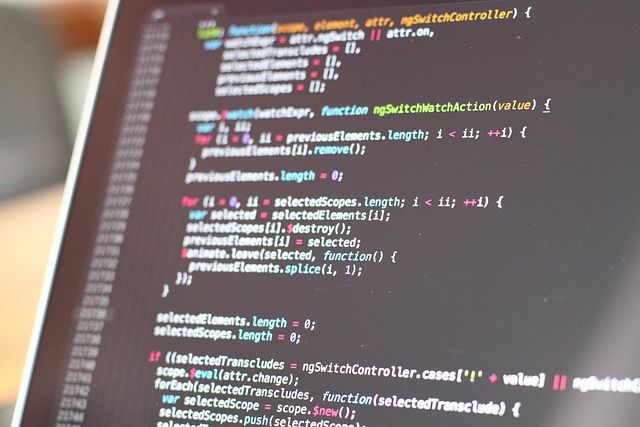Code Longevity and Team Productivity
Clean code isn’t just about style points. It’s about survival. When your project’s reaching its second or third year and the team’s grown from five to fifteen devs, clarity matters more than cleverness. Logic that’s easy to follow today is code that can be maintained tomorrow—by someone who didn’t write it.
Less friction in the codebase means fewer hours wasted tracking down bugs or trying to understand what someone meant by a cryptic variable name. That’s time saved and stress avoided, especially when deadlines get tight.
Plus, clean architecture translates to better onboarding. New team members can ramp faster. Features ship sooner. Problems get diagnosed quicker. It all compounds. Scaling a team on clean, readable code is smoother than scaling one on duct tape and guesswork.
AI Is Speeding Up Workflow Without Replacing Humans
AI tools are everywhere now, and vloggers are leaning in — not stepping aside. Generative tech is cutting the fat from editing, scripting, and research. Need a rough draft for your talking points? AI has you. Want jump cuts and subtitles delivered in minutes? There’s software for that.
But here’s the key: the best creators are using AI like an assistant, not a replacement. They keep control over voice, pacing, and presence. The result? Faster turnaround without losing the human edge.
Still, not everything should be automated. Emotion and spontaneity — that spark behind a favorite vlog — don’t come from a line of code. The sweet spot is knowing what to streamline and what to keep hands-on.
AI isn’t stealing jobs. It’s clearing your plate so you can do more of the stuff only you can do.
Introduction
Vlogging hasn’t just survived the last few years — it’s adapted. While other digital formats zigzagged through cancellations, algorithm drama, and burnout cycles, vlogging found ways to flex and stay relevant. It scratched the itch for connection when people were stuck at home. It evolved into a lifestyle job when traditional media jobs dried up. It didn’t fade. It matured.
Now 2024 is rewriting the rules again. Platforms are shifting what they value. Algorithms are moving the goalposts. Viewers are smarter and more selective. Fast cuts and viral stunts still draw attention, but depth and consistency are what keep people coming back. That means vloggers can’t just post and ghost. The creator who listens, iterates, and sticks to what they uniquely offer is the one who wins.
This year isn’t about chasing every trend. It’s about understanding the new terrain — and building something real on it.
Smarter Code Comments: Why Over What
Writing clean code isn’t just about the syntax. Good comments play a major role in making your code approachable and maintainable. In 2024, developers are shifting focus from over-explaining to writing purpose-driven comments that add real value.
Explain the Why, Not the What
Your code already shows what it’s doing. What developers need most from comments is context—why you’ve chosen a specific approach or solution.
- Avoid restating what the line of code already makes obvious
- Use comments to capture design intent, trade-offs, or third-party limitations
- Good question to ask: “Would someone unfamiliar with the project understand why this is here?”
Cut the Clutter: Remove Outdated or Trivial Notes
Outdated comments are misleading. Trivial comments waste attention. Keep your codebase clean by auditing regularly.
- Remove comments about past bugs that are already resolved
- Delete notes that only restate simple language features (e.g., “This function adds two numbers”)
- If a comment is no longer relevant, it’s actively harmful
Let the Code Speak When It Can
Where possible, write code that documents itself. Descriptive names and clean structure can often eliminate the need for extra explanation.
- Use meaningful variable and function names
- Favor small, focused methods that are easy to read at a glance
- When using an unconventional trick or workaround, that’s when a comment becomes essential
Final Takeaway
Comments shouldn’t act as a crutch for weak code. They should provide insight that enhances understanding. Aim for clarity, relevance, and thoughtful context.
Consistency is underrated. Whether you’re working solo or on a team, style guides like PEP 8, Prettier, or ESLint stop your code from turning into chaos. They’re not fancy—they just keep your code readable, predictable, and easier to debug.
Linting tools are the muscle behind this. They automatically catch the stuff you’d rather not think about—missing semicolons, weird indentation, or unused variables. They’re like that friend who calls out your nonsense before it becomes a problem.
And tabs vs. spaces? Pick one. Stick with it. No one wants to unravel a formatting mess because two people couldn’t agree on indentation. Let the team (or your lint config) decide and just roll with it. Fighting over it is a waste of energy.
DRY: Don’t Repeat Yourself
In vlogging, like in good code, repeating yourself is a trap. Say the same thing too often and audiences tune out. Same goes for editing patterns. Same angles. Same opening line. If your content feels like a rerun, it probably is.
DRY isn’t just about cutting redundancy. It’s about building smarter. Reuse templates. Use modular segments—like your signature outro or intro sequence—but keep them tight and purposeful. Build editing presets that speed you up without stalling your creativity.
That said, abstraction has its limits. Don’t build a complicated B-roll system that breaks every time you film outdoors. Or overuse placeholder voiceovers until your vlog sounds like a stock reel. Sometimes, repetition is better than the wrong template. Don’t force structure where it doesn’t fit.
Keep things sharp. Reuse only what works. Know the difference between a shortcut and a detour.
Don’t Let Exceptions Crash Your App Silently
Things break. Code fails. That’s a given. But when exceptions happen and no one’s watching, you’re gambling with user trust. Silent failures are the hardest to debug and the most costly in production. You don’t just want logs—you want logs that tell a story. Context matters. Time, request ID, user path, failed component. All of it.
Logging isn’t a nice-to-have anymore. It’s basic hygiene. And when something goes wrong, failsafes should give users a soft landing, not a crash. Smart fallbacks—think cached views, default values, alternate content—keep the wheels turning even if one part flakes out.
Production isn’t the place to find out your app lacks a plan B. Build for failure like it’s guaranteed. Because it is.
Smarter Testing for Faster Dev Cycles
Modern development moves quickly. To keep up without breaking things, creators need to adopt focused, efficient testing strategies that scale with their projects.
Prioritize Tests That Matter
Not every line or function needs a test. The key is to focus on what moves the needle:
- Critical business logic that powers core features
- Areas with recent bug history or high user impact
- Integration points with third-party services or APIs
By identifying high-risk, high-value scenarios, you can ensure each test pays off in confidence and stability.
Isolate Logic with Mocks and Stubs
External dependencies can complicate and slow down testing. To keep feedback fast and precise:
- Mock API responses instead of making live calls
- Stub databases or use in-memory versions for unit tests
- Replace cloud service hooks with local fakes in development
This allows you to test your logic in isolation—faster and with fewer false positives.
Automate with a Solid CI Setup
Testing manually only gets you so far. A good Continuous Integration (CI) pipeline helps you catch issues early and often:
- Run test suites automatically on every commit or pull request
- Integrate code coverage and linting tools for consistent quality
- Get fast feedback with parallel testing across environments
Smart automation ensures your code stays clean and deployable—even as your project grows.
Think Twice Before Adding That Library
In 2024, clean code and lean stacks aren’t just nice-to-haves—they’re survival tools. Vloggers using backend services for automation or running sites alongside their channels need to be a lot more selective about dependencies. That drag-and-drop plugin or flashy library might save you a few keystrokes today, but it can cost you speed, security, and control down the line.
Before adding a new package, ask yourself: is this solving a real problem, or just filling space? If you can’t explain what’s inside it or how it runs, it doesn’t belong in production. Most performance and security issues don’t come from your own code—they come from stuff you attached without reading the label.
Make auditing a habit. Trim bloat, check for updates, and drop libraries you no longer use. The fewer moving parts between your camera and your audience, the better.
Technical debt isn’t just a developer problem anymore. For vloggers, it’s the backlog of half-edited video libraries, outdated intros, messy file structures, and bloated workflows patched together over time. Left unchecked, this stuff compounds—quietly draining creative energy and slowing down production.
The fix? Refactor in context. If you’re already re-editing an old series, tighten the branding while you’re at it. If you’re scripting a new mini-series, build a reusable format instead of reinventing with every episode. Treat cleanup as part of the flow, not as some mythical future task you’ll do when you “finally have time.”
Iterate small and often. A five-minute tweak today beats a full system overhaul next quarter. Waiting until the wheels fall off is a losing strategy. Build maintenance into your rhythm and future-you will thank you.
A Map Beats Memory When You Scale
As your vlogging operation grows—whether it’s a solo channel or a small crew—relying on memory starts to hurt more than it helps. When tools stack up and content workflows get more complex, having a clear reference becomes less of a luxury and more of a requirement.
That’s where high-level diagrams and readable READMEs come in. Think of it like a road map for your whole setup: how you shoot, where files go, what gets edited when, how backups are stored. It doesn’t have to be fancy. A simple diagram alongside a plain-text README can do the trick. Especially when onboarding an editor or trying to fix something at midnight, having the system mapped out clearly can save time and nerves.
Debugging a broken upload flow or tracking down a missing daily vlog shouldn’t feel like solving a murder mystery. Keep it visual. Keep it simple. And when in doubt, write it down.
To keep codebases lean and products stable, high-performing dev teams don’t rely on hope. They build in feedback loops. Code reviews aren’t just for catching typos — they’re where patterns emerge, shortcuts get blocked, and future bugs die early. Pair programming helps too. It’s slower in the moment but pays off in fewer regressions and cleaner logic.
Tracking matters. Metrics like bug frequency, release cadence, and churn give you a radar for what’s really happening in your repo. You don’t need a fancy dashboard, but you do need to know if you’re shipping chaos or quality.
Above all, stay curious. The best improvement habit is asking why. Why is this slow? Why did that bug return? Why are users bailing here? Small questions lead to sharper systems.
For a deeper dive into sustainable software architecture: How to Improve Software Performance through Efficient Architecture



 Dorisia is a digital innovation writer at flpsymbolcity, known for turning complex technology symbols, codes, and digital tools into simple resources anyone can use. With a deep passion for online communication systems and evolving tech emojis, she helps users understand how symbols shape modern digital conversations.
Dorisia is a digital innovation writer at flpsymbolcity, known for turning complex technology symbols, codes, and digital tools into simple resources anyone can use. With a deep passion for online communication systems and evolving tech emojis, she helps users understand how symbols shape modern digital conversations.

